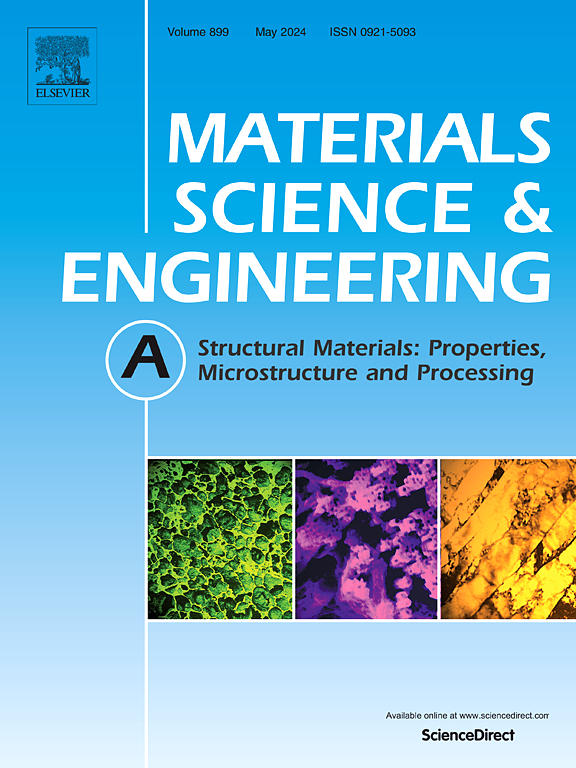室温拉伸变形过程中粗晶和细晶Zn的组织和力学性能演变
IF 6.1
2区 材料科学
Q1 MATERIALS SCIENCE, MULTIDISCIPLINARY
引用次数: 0
摘要
在室温下,通过不同温度挤压得到不同晶粒尺寸的纯锌。采用扫描电镜和室温拉伸试验研究了拉伸过程中微观组织和力学性能的演变。结果表明:当拉伸变形量达到4%时,晶粒尺寸为80 μm的纯Zn频繁断裂,无法继续拉伸;绘图后产生高密度的平行或相交{101 * 2}压缩孪形,导致绘图方向(DD)//<0001>;变形织构和加工硬化现象。当晶粒尺寸减小到15 μm时,纯Zn可以在室温下连续拉伸而不断裂,表现出不同寻常的工作软化。当累计变形量为4%时,Zn的晶粒尺寸增大到初始尺寸的10倍,进一步拉伸后晶粒尺寸减小到70 μm左右。随着变形的增大,晶粒逐渐旋转,非基底织构逐渐完全改变,有利于持续变形。Zn的断裂伸长率达到140%,主要是由于晶间变形机制的形成和非基态织构的形成;拉伸后拉伸强度由130 MPa下降到90 ~ 110 MPa。本文章由计算机程序翻译,如有差异,请以英文原文为准。
Evolution of microstructures and mechanical properties in coarse- and fine-grained Zn during drawing deformation at room temperature
Pure Zn with different grain sizes obtained via extrusion at different temperatures was drawn in multiple passes at room temperature. The evolution of the microstructures and mechanical properties during drawing was examined using scanning electron microscopy and room-temperature tensile tests. The results indicated that pure Zn with a grain size of 80 μm broke frequently when the drawing deformation reached 4 % and could not be drawn further. A high density of parallel or intersected compression twins was generated after drawing, leading to a drawing direction (DD)//<0001> deformation texture and work-hardening phenomenon. When the grain size was reduced to 15 μm, pure Zn could be drawn continuously at room temperature without breaking, exhibiting unusual work softening. In particular, when the cumulative deformation was 4 %, the grain size of Zn increased to >10 times the initial size and decreased to approximately 70 μm with further drawing. With increasing deformation, the grains gradually rotated, and the non-basal texture gradually changed completely, which was conducive to continuous deformation. The fracture elongation of Zn reached 140 % owing to the initiation of the intergranular deformation mechanism and non-basal texture; however, the tensile strength decreased from 130 MPa to 90–110 MPa after drawing.
求助全文
通过发布文献求助,成功后即可免费获取论文全文。
去求助
来源期刊

Materials Science and Engineering: A
工程技术-材料科学:综合
CiteScore
11.50
自引率
15.60%
发文量
1811
审稿时长
31 days
期刊介绍:
Materials Science and Engineering A provides an international medium for the publication of theoretical and experimental studies related to the load-bearing capacity of materials as influenced by their basic properties, processing history, microstructure and operating environment. Appropriate submissions to Materials Science and Engineering A should include scientific and/or engineering factors which affect the microstructure - strength relationships of materials and report the changes to mechanical behavior.
 求助内容:
求助内容: 应助结果提醒方式:
应助结果提醒方式:


